Once the hunting grounds of the royal family of Jaipur, today Ranthambore National Park and Tiger Reserve is one of the foremost protected areas in India for anyone keen to see the Bengal Tiger. Over time the Park’s tiger population has increased due to some serious conservation efforts as well as locals’ acknowledging that ‘tiger tourism’ can be a major source of income for them and their families. Visit and follow our Instagram page to see photos from Ranthambore and other national parks we cover.
Hunting as a team – Arrowhead and cubs, Riddhi & Siddhi
Ranthambore National Park is a 3.5 hour drive from Jaipur or a 4 to 6 hour train journey from Delhi. With the new Delhi – Mumbai expressway, the travel time to Ranthambore from Delhi has cut down to almost half i.e. 5 hours. Several visitors add this to their itinerary especially if they visit the golden triangle – Delhi, Agra and Jaipur. The Park’s tigers such as Machli, Sundari, Arrowhead, Riddhi and Siddhi, Ustad, Sultan (to name a few) have been in the media off late thanks to renowned wildlife photographers, film-makers and conservationists.
The Park is divided in to 10 zones and there are rumors that additional zones will be added in the near future. Zones 1 to 6 and 10 are considered premium zones for which you must book at least 90 days in advance. Zones 7,8 and 9 are not so popular with tourists as chances of spotting tigers there is less than in the other zones. Safaris can also be booked one week before the safari slot but these safaris called ‘tatkal’ are very very expensive and there is a 50/50 chance that you will get a confirmed booking. Safaris are done in two slots – mornings between 6-9/9:30AM and afternoon between 2/3-6PM. The exact timing of the safari depends on the season. You should be ready in the lobby of your hotel at least 15 minutes prior to safari start time.
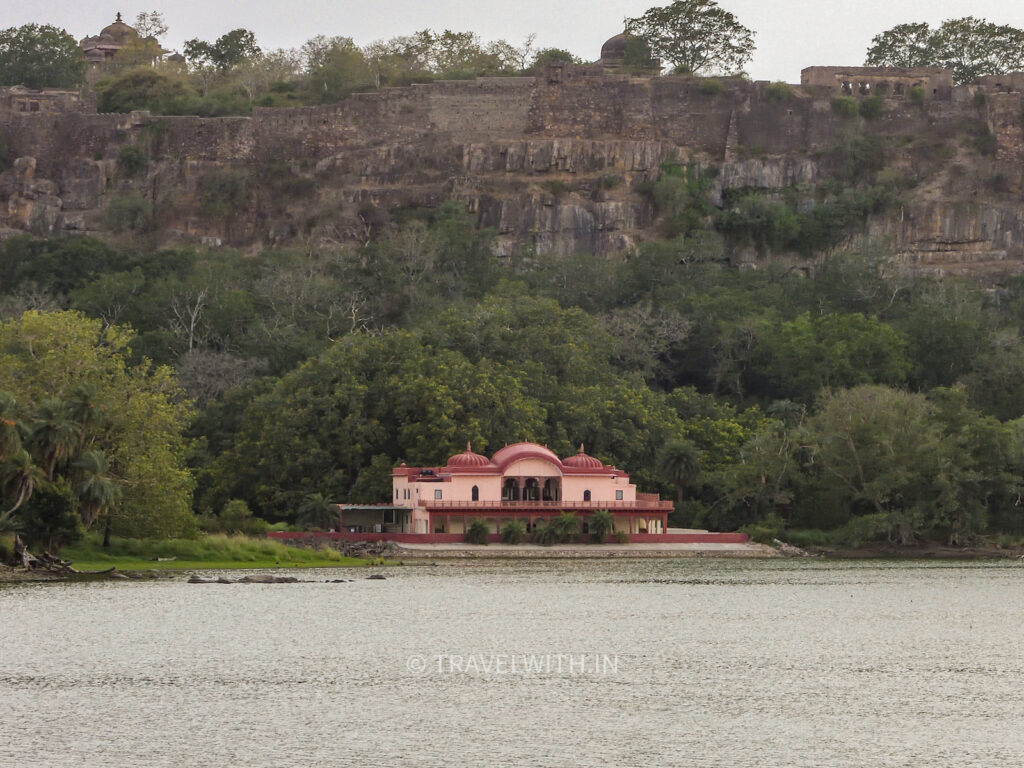
Jogi Mahal – Former hunting lodge of the Royal family
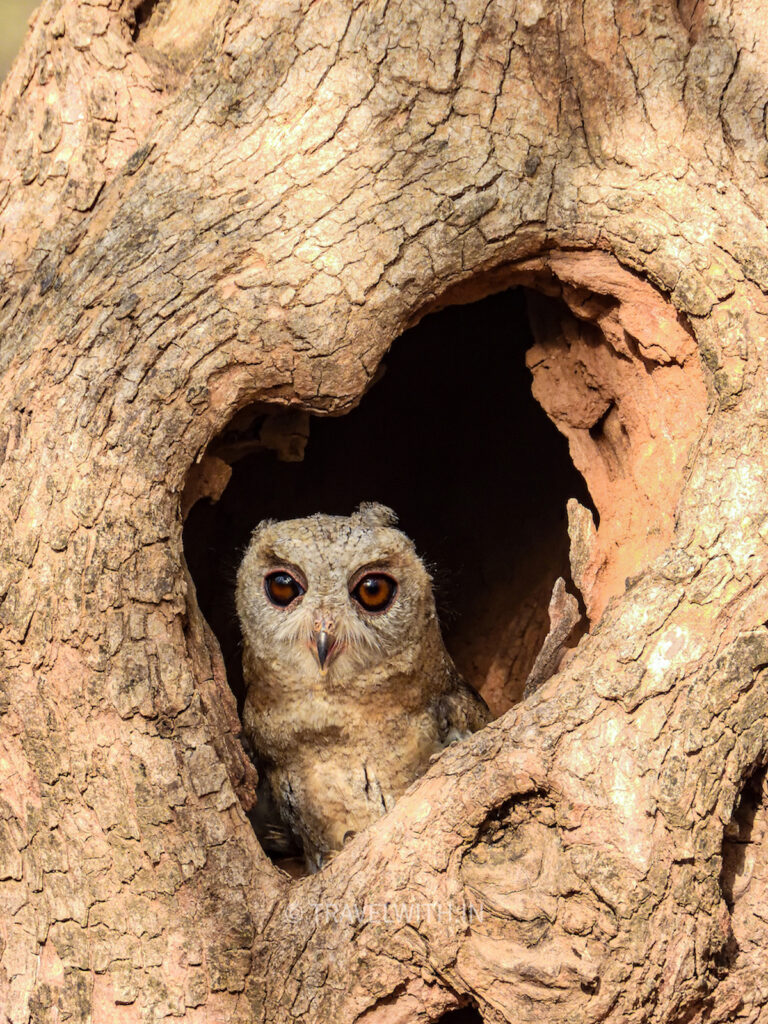
Juvenile Indian Scops Owl in a heart shaped tree hole
Most of the hotels are located close to gates 1-5 and safari vehicles pick you up and drop you back to your hotel after each safari. If you stay in a hotel that is far off from the safari gates then the charges for pick up / drop increase. If you’re scheduled to do safaris in zones 6 to 10, be prepared to leave your hotel an extra 15 minutes earlier. Make sure you carry your photo Ids that you submitted during the safari booking process. Each gypsy (safari jeep) can seat a maximum of six guests plus a guide and a driver.
An alternative (and cheaper) way of seeing the forest is in a canter which is an open top mini bus with a capacity of 20 guests. This canter goes around picking up all the guests from their respective hotels and when guests are delayed, you are not able to make it in time for your safari. Canters are also slow and noisy and are not able to make it to all parts of the Park especially routes that are steep, rocky or very narrow. Canter safaris can also get loud and annoying as other guests may have a different agenda on mind.
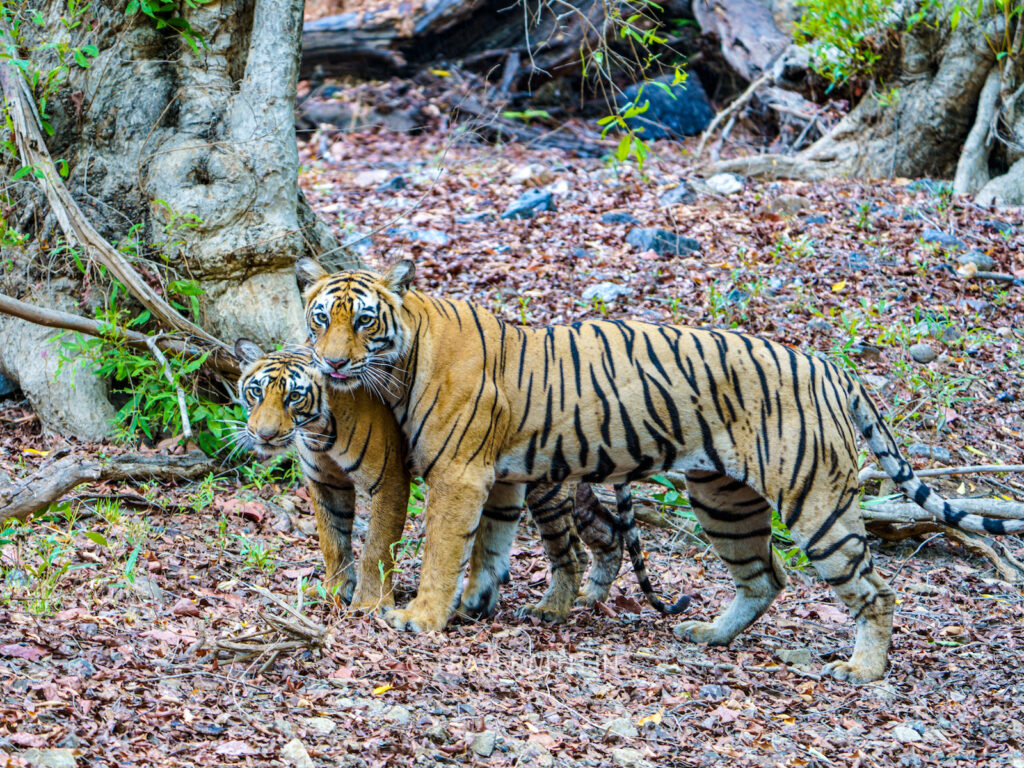
Tigress and Cub, Ranthambore
Leopards of Ranthambore
Tiger sightings vary every year as new adults take on their parents or other rivals and drive them out of their territory. From a tiger’s perspective a territory is considered prime if it supports a large prey base (deer, antelope, wild boar etc.) as that ensures a constant supply of food for itself and it’s future generations. Older tigers once driven out by new blood from their territory venture close to the fringes of the national park due to access to easy prey i.e. cattle or to protected forests and reserves such as Kaila Devi Wildlife Sanctuary and other areas.
We have made several trips to Ranthambore in the past few years and have seen tigers in most of my safaris. We believe it’s a combination of luck and timing. We have also thoroughly enjoyed all our game drives even when we did not spot tigers as Ranthambore has a very rich birdlife. Other mammals that are spotted during safaris include leopards, sloth bears, smaller cats, deer, Indian hare, mongoose etc.
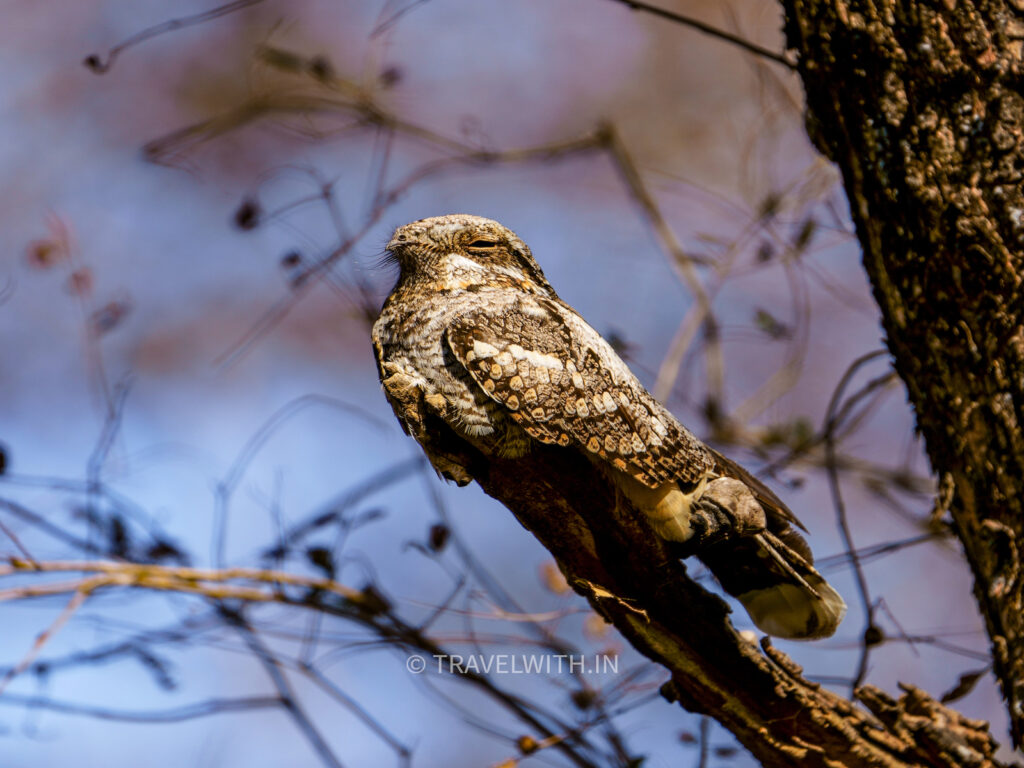
Indian Nightjar
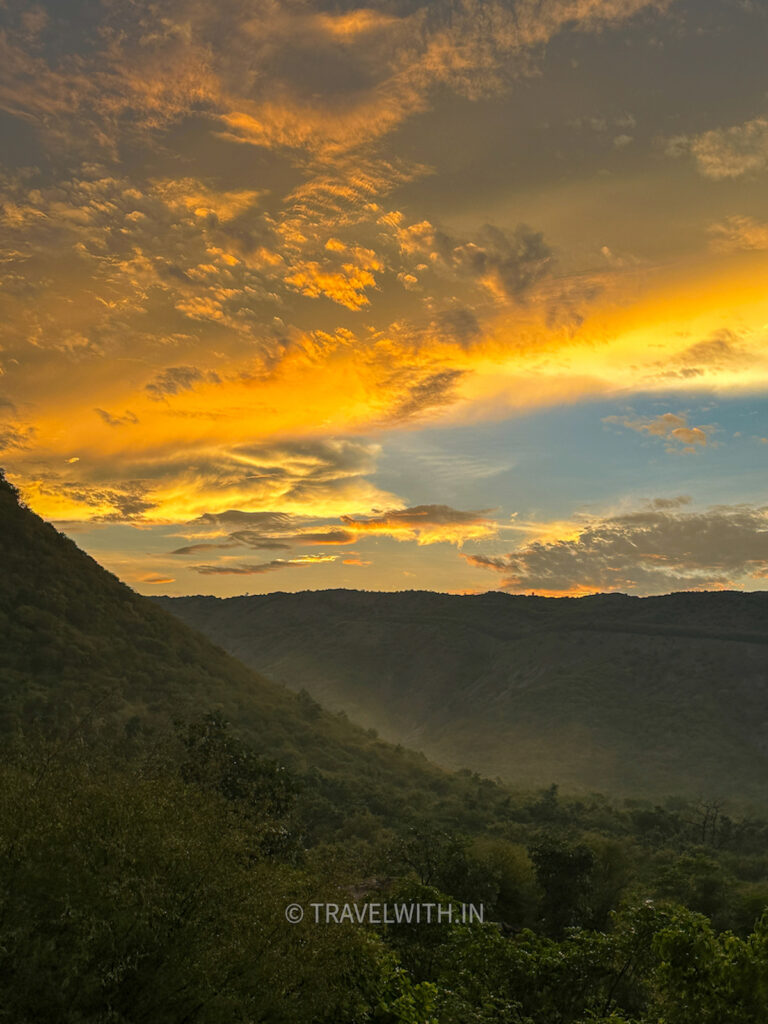
Ranthambore in the Monsoon
Even the monsoon season when only zones 6-10 are open for safaris, has a different charm all together. The forest transforms in to different shades of green and all the lakes and ponds are full of water. During the monsoon safaris you see hundreds of of spotted deer together and the ubiquitous Indian peafowl is dressed to impress the ladies.
Often, visitors ask for guaranteed tiger sightings. That is never possible in the wild and if anyone guarantees you tiger sightings they’re bluffing. There is no guarantee that you will see a tiger or for that matter any specific species during a safari. Tiger and other animal sightings partly depend on your safari driver and naturalist as they should be able to read and hear signs that indicate the presence of a big cat and then the rest is about timing. After all, it is a wild animal in it’s natural habitat and not in a zoo.
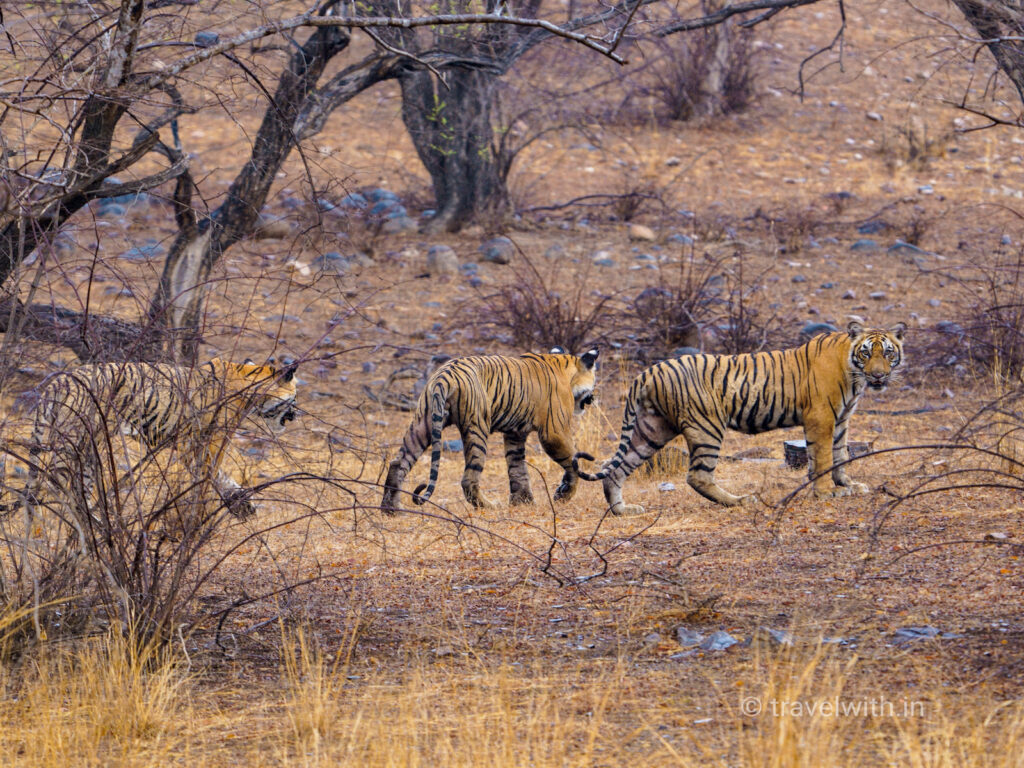
Tigress with Cubs
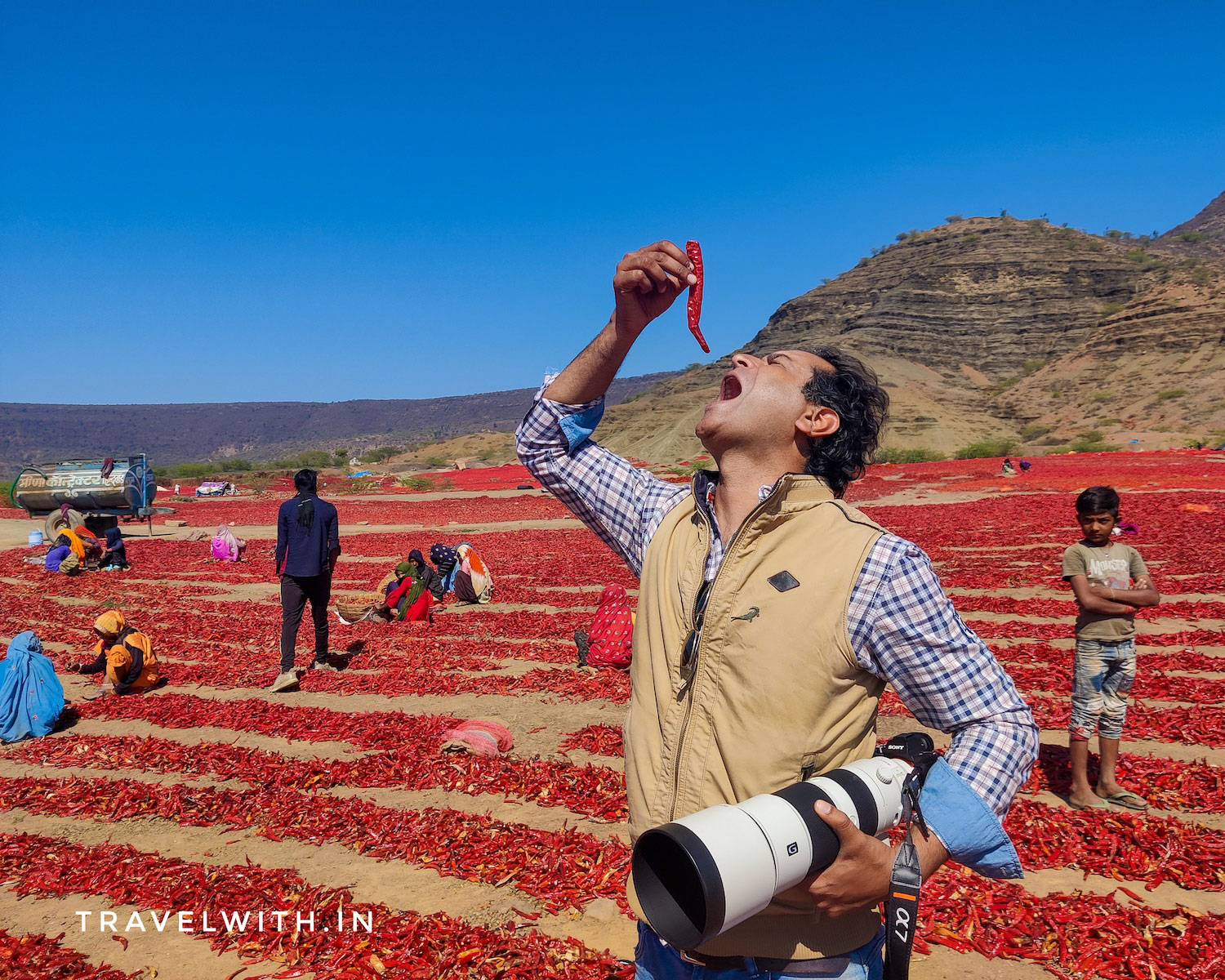
Drying red chillies near Ranthambore
Safari drivers and naturalists are normally allocated through a roster system prepared by the forest department, however, English speaking and more experienced guides or those with a deep knowledge of birds can be arranged by paying an extra fee.
Itinerary (can be customized):
Day 1
• Arrive by train or drive to Ranthambore National Park (5 hours from Delhi and 3.5 from Jaipur). If arriving by train get off at Sawai Madhopur Train Station in the morning. I can book your train tickets and also arrange for a taxi to pick you up and bring you to your hotel. The closest airport is Jaipur.
Sloth Bears – Ranthambore Tiger Reserve
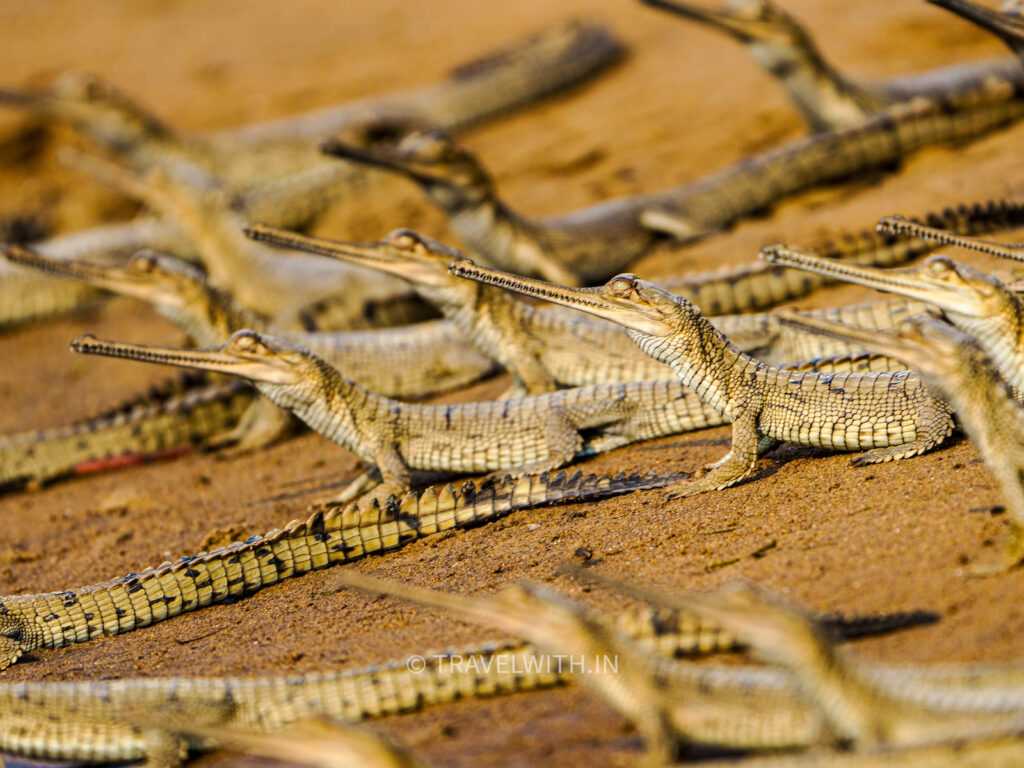
Gharial Hatchlings seen during the Chambal River Safari, Palighat
• You can do the afternoon safari if you arrive in Sawai Madhopur by noon. If you arrive later in the day then you could visit the Ranthambore Fort which is inside the National Park or do a river safari on the Chambal in Palighat which is a 45 minute drive from Sawai Madhopur (Ranthambore). Both these experiences open from sunrise to sunset. The river safari is ideal for those of you interested in seeing the critically endangered Gharial and mugger crocodiles and birds. Safaris are normally for up to an hour in motor boats with a local boatman who doubles up as a guide. An English speaking experienced guide can be arranged upon request.
• The river safari is ideal from October to March, after that it gets hot on the river. The river safaris stop operating from June 1 onwards. This river safari, although on the Chambal is conducted upstream whereas the other river safari lead by Kunal as your naturalist is done near Dholpur (Rajasthan) or Bah (Uttar Pradesh). Both locations are an hour drive from Agra. Click here to know more about the river safari near Agra.
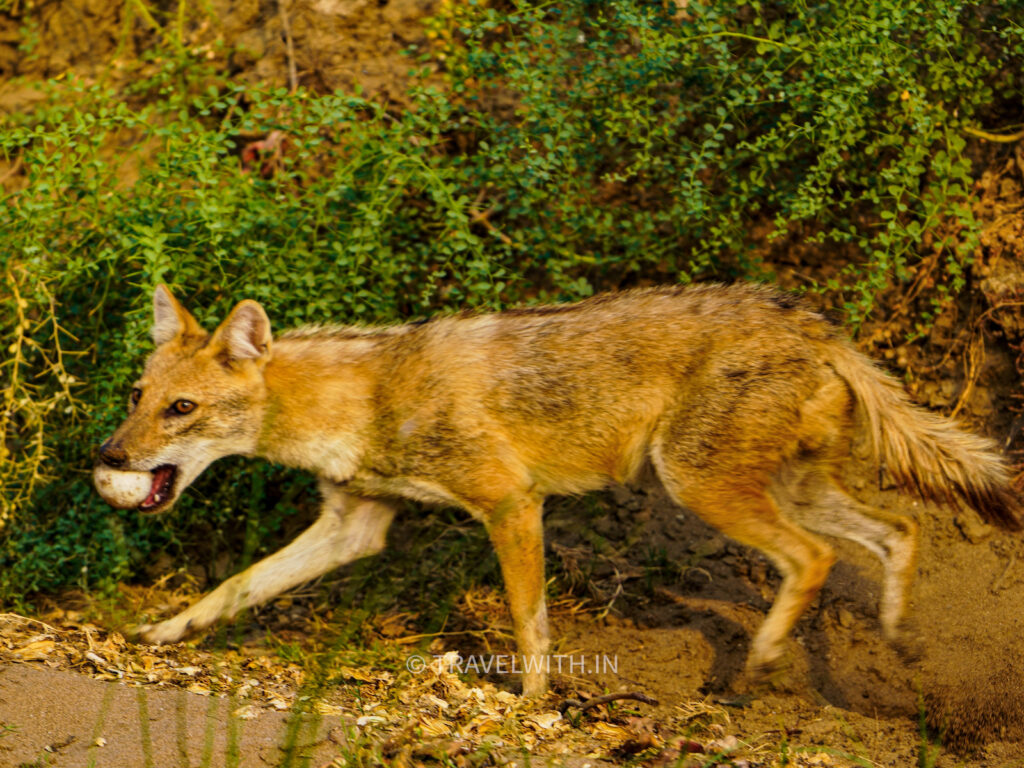
Jackal raiding a crocodile nest on the Chambal river banks
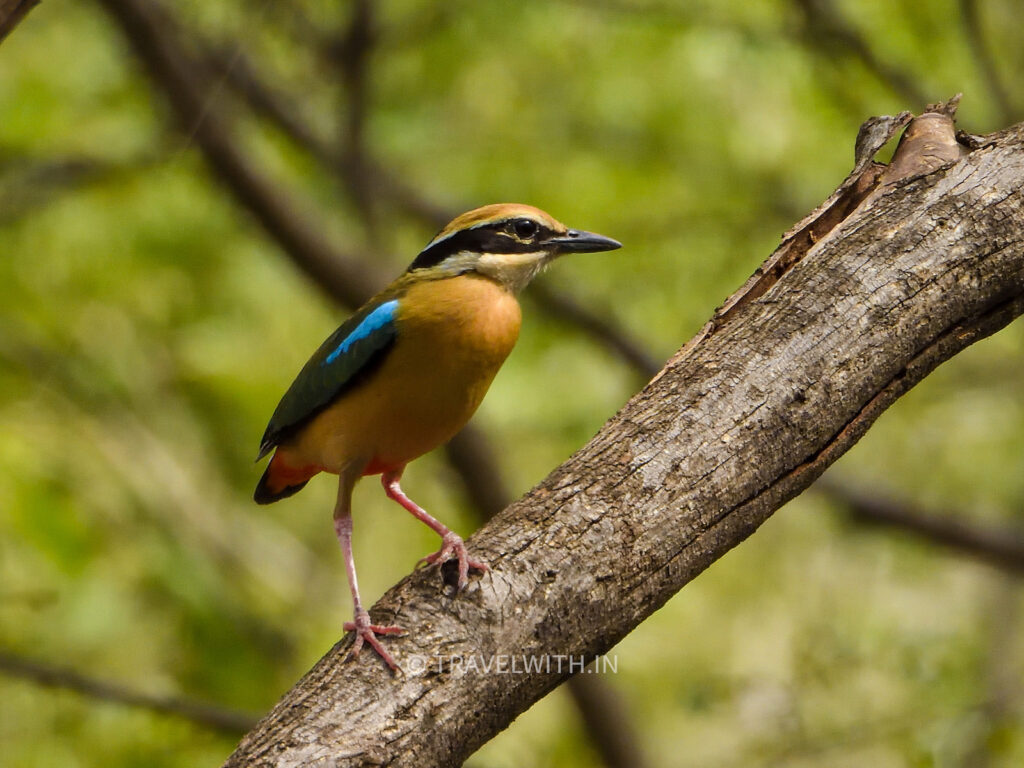
Indian Pitta or Navranga in Hindi (bird with 9 different feather colors)
• Back to your hotel for dinner. Independent restaurants are not very common in Ranthambore, hence all your meals should be in the hotel you are staying in.
Day 2-3:
• Morning safari with an experienced guide/naturalist. Your safari vehicle will pick you up from from the hotel 20 minutes before your safari start time. You need to be ready in the hotel lobby with your IDs, bottled water and wear appropriate clothing depending on the time of the year.
• Breakfast post safari and lunch prior to afternoon safari.
• Afternoon safari with an experienced guide.
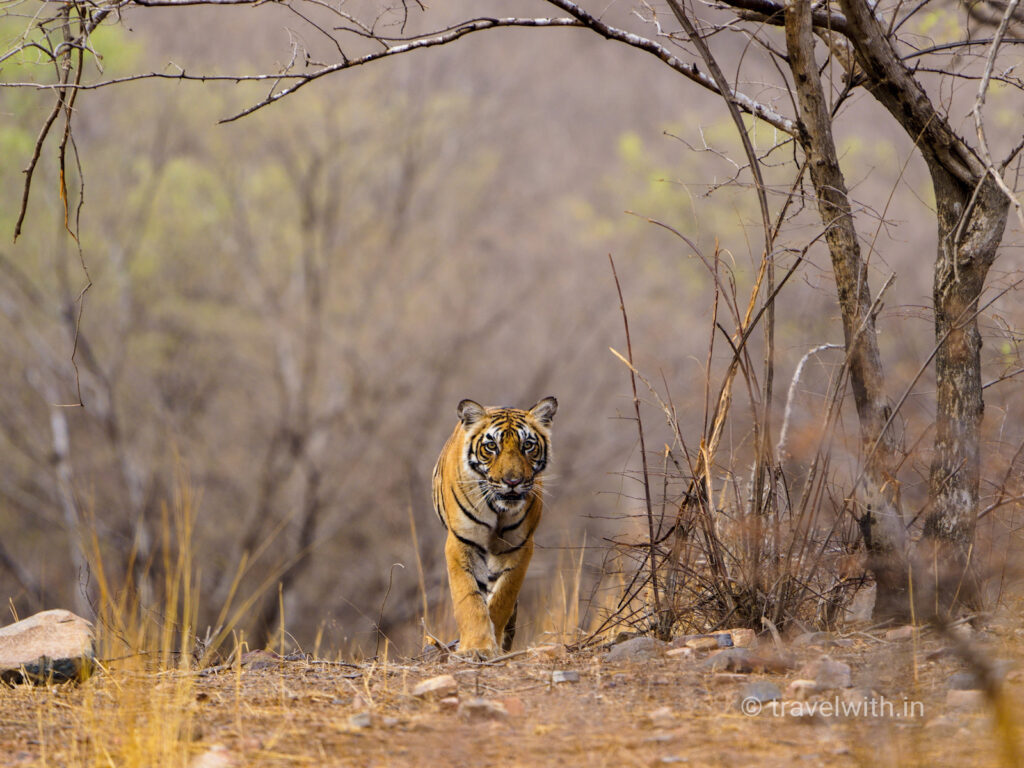
Head on shot of a tiger in Ranthambore
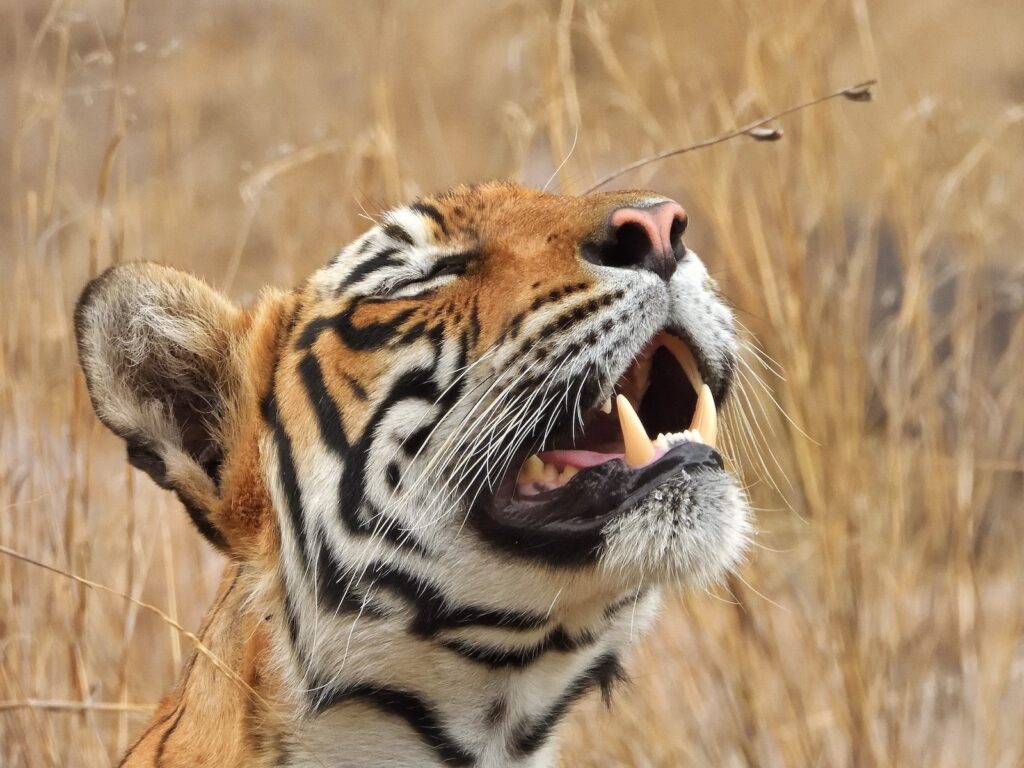
Shakti, a female tigress of Ranthambore
Day 4:
• If you checked in late on Day 1 and missed the afternoon safari then you can do a morning safari.
• Alternatively, you can also do the river safari on the Chambal if you didn’t do it on Day 1. You can then proceed after the river safari to your onward destination.
• OR check out after a late breakfast.
Over time Ranthambore has become a very popular national park. As such, safari permits need to be booked way in advance. I recommend a four day visit so you can do at least 4-5 safaris thus increasing your chances of spotting tigers. As mentioned above, safari bookings done last minute can break the bank. Please also note that safaris once booked are non-refundable and no changes are permitted in the names or dates.
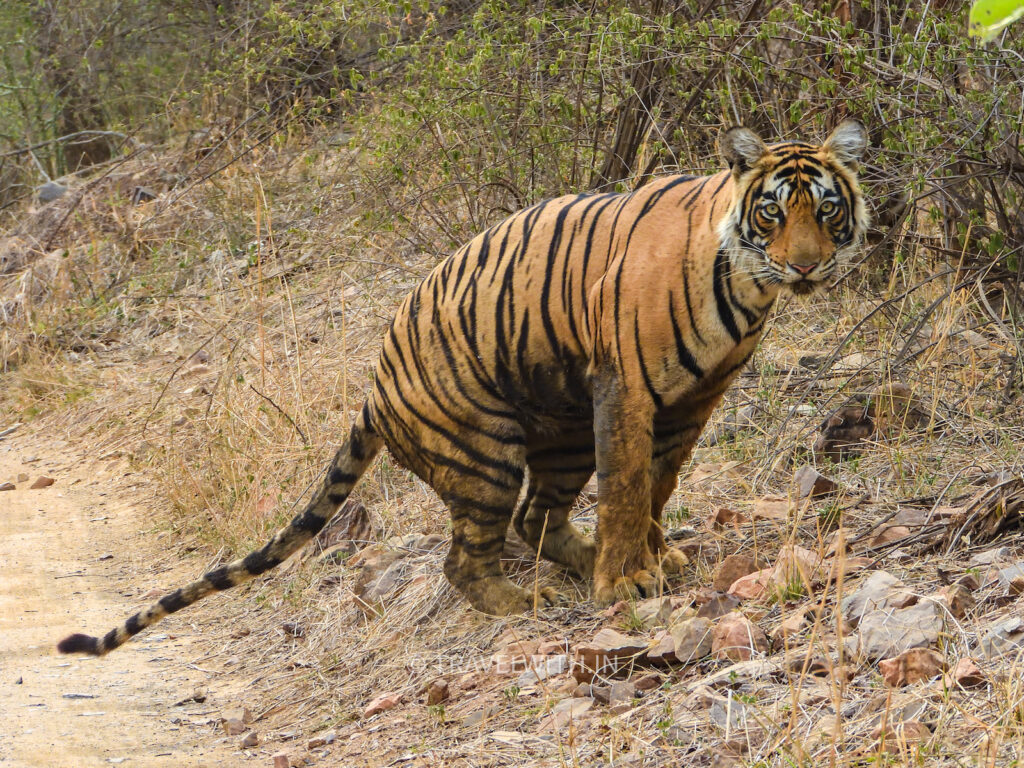
When nature calls
Under the Jamun Tree
Note:
• It is recommended to wear dull color clothes (brown, grey, olive green) during safaris so as to blend in with the environment.
• There is no guarantee that you will see the above wildlife.
• What to carry during the safari: photo identification, camera, binoculars, warm jacket (in the winter), backpack to carry sun glasses, cap, vizer, sun block, some cash and drinking water.
• Smoking and drinking alcohol is prohibited in National Parks and Wildlife Sanctuaries.
• Please do not throw trash on the forest floor even if you don’t see a trash can. Please ask your guide who will help you to dispose it off properly.
• To prevent any disturbance to wildlife, we do not encourage the use of call playback to bring birds out in the open, feeding or baiting of wildlife.
• Due to the remoteness of the location, you may not have access to the kind of amenities, facilities and services that you typically are used to / get in big cities. Please ask me if you have any questions about what or what not to bring with you on this trip. Cell phone / data network may be erratic too.


